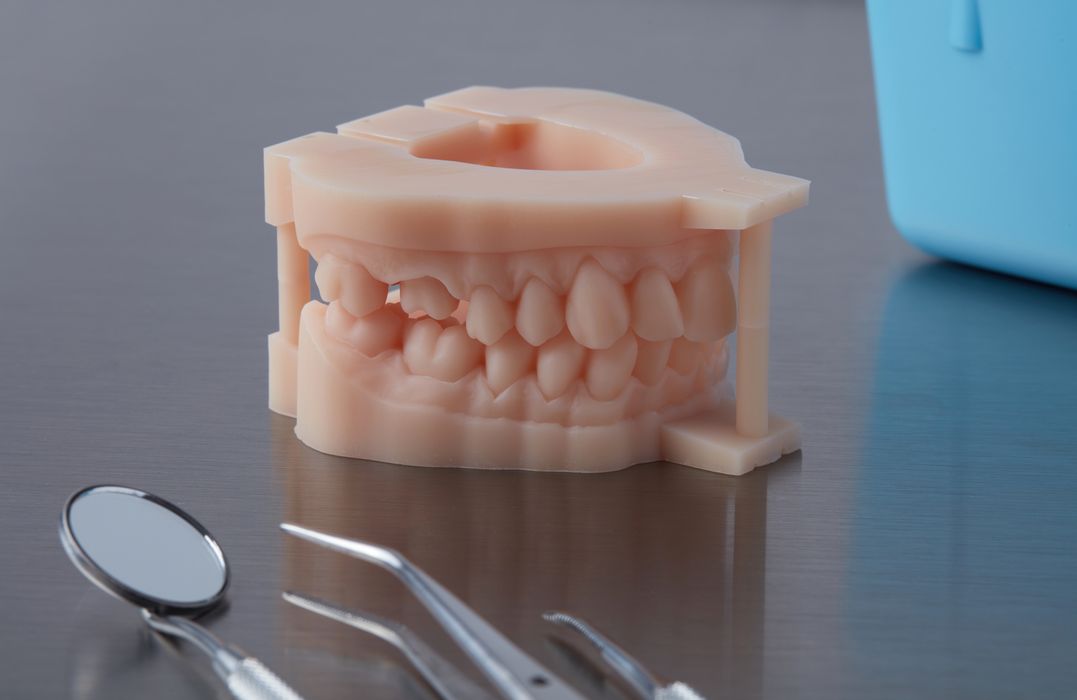
Formlabs announced a series of dental 3D printing products, including one involving SLS.
Many people will know Formlabs as a resin 3D printer company, and indeed that is their flagship technology. The company began via Kickstarter many years ago with that 3D printing process and they’ve been improving their implementation until this day, with the latest release being the massive Form 3 device.
Along the way Formlabs has created a definite focus on the dental industry. Initially their products were general purpose, but by working with dental technicians, the company realized there were things that could be done to make their equipment more friendly to that industry.
Since that time we’ve seen several developments along that line. 3D printers have been certified for use in dental applications; new materials specifically designed for dental applications have been developed and released.
That theme continues today with several announcements from Formlabs.
First, they’ve gone back to their lab and redesigned the resin typically used for dental restorative model production so that it can be 3D printed at twice the normal speed. This is significant, as it will allow for more throughput through each Formlabs device.

The second improvement is a validation performed by 3Shape, a manufacturer of dental 3D scanning equipment and software used by many dental operations. The certification demonstrates that dental production using certain Formlabs devices does meet their standard.
Let’s put that together: machines AND materials are certified by a leading dental provider. If that doesn’t open up more doors into the dental industry for Formlabs, I don’t know what will.
Oh, you’re wondering which equipment was certified?
The certifications cover the Form 3B and Form 3BL, the two dental-optimized versions of the popular Form 3.
And the Fuse 1.
Hold on, the Fuse 1 is Formlabs’ polymer powder SLS 3D printer. It’s not a resin device — how could this be used for dental production? Up to now the Fuse 1 has been used to produce mechanical parts in two flavors of nylon material.
It turns out you can use SLS to produce dental appliances. But why do this? Are the Form 3 options insufficient? There is a good reason for this, as Formlabs explains:
“The Fuse 1 reduces costs and labor by enabling large dental manufacturers to produce more than 150 dental models for clear aligners in a single print. Compared to other SLS 3D printers, the Fuse 1 offers amore accessible price and easier workflow while delivering high quality parts. When compared to already-affordable SLA costs, the Fuse 1 enables laboratories and clear aligner manufacturers to reduce the cost per part by 50 percent, while simultaneously increasing production volume. This enables more efficient model production.”
Now that’s attractive, if you happen to be a dental laboratory looking for a way to increase throughput. Previous options from Formlabs would have been to simply purchase more and more Form devices, but with the Fuse 1 a lab could, with a single device, vastly increase throughput. And do so at a reduced price, too.
One item not announced by Formlabs is an associated dental material in powder form for the Fuse 1. Current materials for the Fuse 1 from Formlabs include PA11 and PA12 powders, typically used for mechanical part projects. It’s unclear whether Formlabs will announce a new dedicated dental powder, or whether the existing materials are sufficient.
Given Formlabs’ penchant for making new materials, I wouldn’t be surprised if they do announce a new powder material or two in coming months.
Via Formlabs

